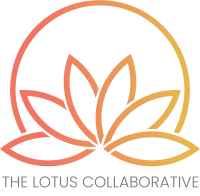|
Written by TLC's Outreach and Education Coordinator, Laina Copley.
Why is it so tempting to categorize foods as either good or bad? Is this really a helpful tool for healthy eating? It’s almost impossible not to do it. While the specifics may vary from person to person (I say milk is criminal, you’re convinced of the evils of soy) the process of food labeling is not uncommon, especially for people who struggle with food. And that, right there, I think is the key. People who have a relaxed relationship with food tend not to label it in terms of good or bad. They don’t have forbidden foods or guilty pleasures (at least not ones that actually leave them feeling guilty). Of course they may be aware of nutrition and try to favor foods that have more nutritional merits over ones that are nutritionally lacking, but they don’t get caught up in the good food/bad food routine that so many of us fall victim to. So why do we do this and why does it end up causing more problems than it solves? I think for most of us labeling foods arises out of a mixture of convenience and fear. The mind naturally creates categories for things to help us process information more quickly. If you’ve already divied foods up into “healthy” and “unhealthy”, which usually becomes “good” and “bad”, then you can quickly make a decision when going down the buffet line (i.e. salad = good, cake = bad) which saves time on thinking. This isn’t so terrible to an extent, as we truly would spend a lot of time and brain power if we had to evaluate and compare every food option we were ever given without any mental shortcuts. The problem arises when we say salad is good and cake is bad so I am never, ever going to eat cake. Ever. Of course that just makes us want it more. Makes us linger at the buffet table looking longingly at the criminal cake that we definitely shouldn’t eat. In my experience, I either end up dreaming about that very naughty cake, imagining how good it would taste and feeling a mixture of deprivation and martyrdom for not succumbing to my desire. OR (and this seems to happen more often), I finally give in and eat the forbidden fruit. Usually when this happens an alarm goes off in my head screaming “Red alert! Red alert! Criminal food on the loose! Run for it!” which then translates into eating another piece and another because hey, I’ve already committed the crime, right? So I might as well take advantage of that double jeopardy loophole… Today’s Aspiration: Try to avoid giving foods moral judgments. Nutritional judgments can be fine if they remain objective (vegetables have fiber, ice cream has saturated fat), but the second you start thinking in terms of good or bad remind yourself that food is neutral. It is not inherently good or evil and your moral character and value as a human being are not dependent on the foods you eat. When we can see food more objectively, it actually helps to diminish our cravings for those “bad” foods, as well as any guilt we may normally feel if we do decide to eat them.
1 Comment
|
The
|
2125 Delaware Ave, Suite A, Santa Cruz, CA, 95060
2500 Market Street, San Francisco, CA 94114

 RSS Feed
RSS Feed